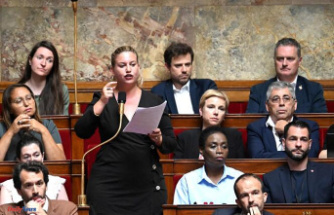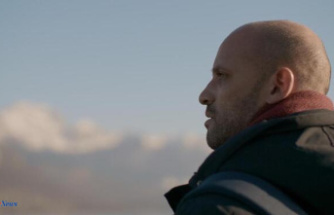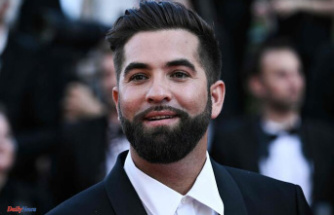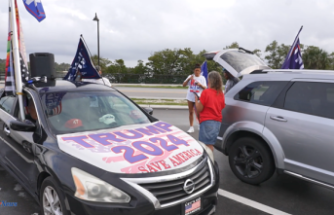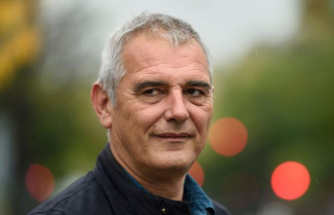COLUMBIA (S.C.) -- South Carolina Supreme Court justices questioned Tuesday whether a prosecutor offered photos of five children who had died to a jury in order to unfairly upset them and sentence their father to death.
Robert Dudek, an attorney who wanted to overturn Jones' 2019 conviction for five murder counts and the death sentence, claimed that the photos of the children were made as court records in the final moments of the trial. These images were taken nineteen days after the deaths of the children and after Timothy Jones attempted to speed up their decomposition.
"I have been doing this for more than 30 years, and they are almost impossible to see. They are horrendous by any standard. "Here you have twelve jurors on the street looking at photographs of dead children," Dudek, chief appellate defender for South Carolina Commission on Indigent Defense, said.
Rick Hubbard, a state's top prosecutor, made a rare appearance before the highest court of the state to justify his actions in Jones' trial. He said that he learned that jurors lose faith in a prosecutor if he shows them horrendous photos.
Hubbard stated that he told them in Hubbard's closing statement that if they needed additional proof, the envelope containing photos of children in garbage bags was in the jury room. "If you have any doubts about the sentence for this man, look into the bag!"
Hubbard stated that "they get offended at my holding up photos that are difficult." "So they did it on their own time."
The justices will rule at another date.
Jones murdered five of his Lexington children, aged 1-8, in their Lexington house on August 2014. After Divorce, he had custody.
Prosecutors claim that Nahtahn killed Nahtahn, his 6-year-old boy, because he was a rebel, and then he planned to kill the rest members of the family in order to cover up the crime.
Jones drove the Southeast for nine days with their bodies before disposing of them in bags along a dirt road in Alabama.
Jones' lawyers argued that Jones was innocent by reason insanity. They claimed that Jones was confused by his schizophrenia and was unable to distinguish right from wrong because of stress from , a failed marriage, and trying to care for his children by himself.
Jones' lawyers are seeking to have his sentence and conviction overturned for a variety of reasons. The lawyers also stated that a judge should have informed jurors that Jones was not innocent by reason of insanity and would not be released from custody. He would instead be held in custody for several more months, or even the rest of his lifetime, depending on his mental state.
Jones' attorneys argued that a judge should have allowed jurors access to a videotape of Jones’ mother. Jones was ordered to stay in an out-of state mental hospital for decades due to schizophrenia. Jones knew of this diagnosis and became angry and anxious.
Jones' lawyers also stated that the case should be thrown out by Circuit Judge Eugene Griffith, who refused to permit testimony from a defense expert witness. He planned to testify that a prosecution witness had erred in scoring a physiological exam which found Jones exaggerating his symptoms.
The photos of the children who had died were the focus of much of Tuesday's arguments. The defense attorneys attempted to present them to the jury before Jones was found guilty. They claimed that Jones' insane condition helped to prove his insaneness. The judge accepted the objections of the prosecution.
Dudek stated that the defense lawyers believed that prosecutors would use the photos last minute before the jury began deliberating on Jones's death. They also wanted to reduce their impact by using the photos earlier in the trial.
Justices asked Hubbard to explain why he requested to include photos after Dr. Janice Ross had testified in terrible detail about the conditions of the bodies, including the saw marks on Dr. Jones's 2-year-old son’s leg. Also, what Jones had done to speed their decomposition.
"The way he treated these bodies with contempt. Hubbard replied that Dr. Ross had said here there was a disarticulated foot, referring to Gabriel, the 2-year old. "But you had the to look to understand what she meant."
Associate Justice John Kittredge wondered aloud before Hubbard spoke about why the prosecutor would risk what seemed to him to be a straightforward case. Kittredge referenced a 2010 rulingby state Supreme Court in which they warned prosecutors not to submit photos of Spartanburg couples who were brutally beaten and burned by a man.
Stop it! Kittredge stated, "Stop this absurdity!" "The pathologist gave a detailed testimony about what the images showed, but we have to add the autopsy photos to the mix to make it more interesting. It is not clear what will be required to stop this.
Date Of Update: 11 November 2021, 12:33

